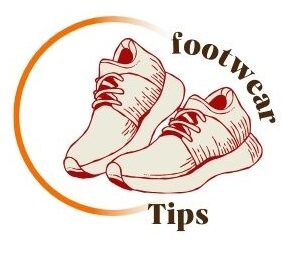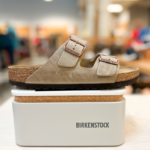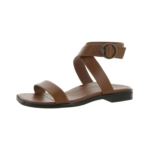Address:
- 2365 Hood Avenue, San Diego, CA, 92123
To pick your first pair of barefoot shoes, consider your foot shape and desired activities. Research brands and try different styles to find the best fit for you.
When transitioning to barefoot shoes, it’s important to choose a pair that provides proper support and flexibility for your feet. Look for shoes with wide toe boxes and minimal cushioning to promote natural movement. By understanding your foot type and comfort preferences, you can select a pair of barefoot shoes that align with your needs.
Remember to test out different options and consult with experts to ensure a comfortable and beneficial experience with your new footwear choice.
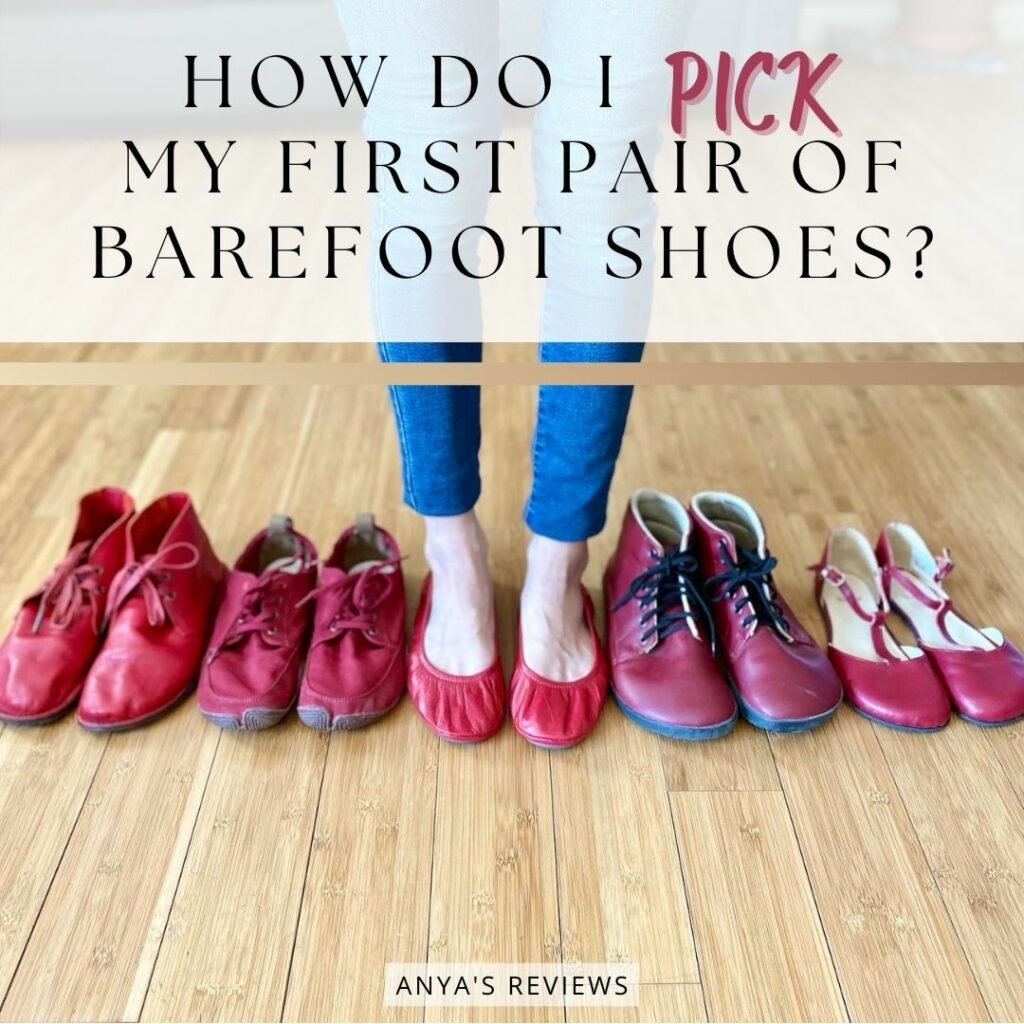
Credit: anyasreviews.com
Discovering your first pair of barefoot shoes involves considering factors like flexibility, wide toe box, and thin soles. Prioritize comfort and foot freedom for a natural walking experience. Research brands and try different styles to find the perfect fit for your feet.

Credit: www.reddit.com
Discovering the ideal barefoot shoes involves understanding your feet and their unique needs. Look for shoes that provide flexibility, a wide toe box, and minimal cushioning to promote natural foot movement. Consider consulting with a podiatrist for personalized recommendations to ensure a comfortable and supportive fit.
Understanding Your FeetWhen choosing your first pair of barefoot shoes, it’s important to understand your feet. This involves analyzing your foot shape and size, as well as identifying your arch type. By gaining insights into these aspects, you can make an informed decision that aligns with your foot’s specific needs.Analyzing Foot Shape and SizeAnalyzing your foot shape and size is crucial in selecting the right barefoot shoes. Start by measuring the length and width of your feet. This can be done by tracing your foot on a piece of paper and using a ruler to measure the dimensions. It’s essential to ensure that the shoes you choose provide enough space for your toes to spread naturally. Look for shoes that accommodate the width and length of your feet, allowing for unrestricted movement.Identifying Your Arch TypeIdentifying your arch type is another key factor in choosing barefoot shoes. Determine whether you have high, medium, or low arches. One way to do this is by examining the shape of your footprint after stepping on a piece of paper with wet feet. High arches will leave a narrow imprint, while low arches will leave a wider one. Understanding your arch type will help you find shoes that provide the appropriate support and flexibility for your feet.In summary, understanding your feet, including their shape, size, and arch type, is essential when selecting your first pair of barefoot shoes. By considering these factors, you can ensure that the shoes you choose promote natural foot movement and overall comfort.Barefoot shoes are designed to mimic the feeling of walking barefoot, allowing your feet to move naturally and providing a more minimalist approach to footwear. When choosing your first pair of barefoot shoes, it’s essential to consider the key features that set them apart from traditional shoes. Understanding the specific attributes of barefoot shoes can help you make an informed decision and reap the benefits of this unique footwear style.
Barefoot shoes are characterized by their thin, flexible soles that allow for maximum ground feel and sensory feedback. The thin sole promotes natural foot movement and encourages a more efficient gait pattern. This feature enables your feet to function as they would barefoot, while still providing a protective barrier from rough surfaces.
A distinguishing feature of barefoot shoes is their wide toe boxes, which allow your toes to splay and move freely within the shoe. This design promotes better balance, stability, and overall foot strength. By accommodating the natural shape of your foot, wide toe boxes prevent the compression of toes that is common in traditional footwear, leading to improved comfort and performance.
Barefoot shoes maintain a zero-drop platform, meaning there is no height difference between the heel and the toe. This design encourages a more neutral alignment of the foot and promotes a natural posture. With a zero-drop configuration, the foot is allowed to function as it would without the interference of elevated heels, supporting a more anatomically correct and efficient stride.
When it comes to picking your first pair of barefoot shoes, it’s important to understand the different types available. Barefoot shoes are designed to mimic the feeling of being barefoot, allowing your feet to move naturally and providing a more connected experience with the ground. Whether you’re looking for everyday use, running and sports, or hiking and outdoor adventures, there is a barefoot shoe to suit your needs.
Barefoot shoes for everyday use are designed to provide maximum comfort and flexibility for all-day wear. These shoes are often made with soft and breathable materials, allowing your feet to breathe and preventing sweat and odor buildup. They are also typically lightweight and have thin soles, allowing you to feel the ground beneath you as you walk. Whether you’re at work, running errands, or just going about your daily activities, barefoot shoes for everyday use offer a natural and comfortable option.
Barefoot shoes for running and sports are specifically designed to enhance your performance and protect your feet. These shoes often have a minimalist design with thin soles, allowing for better ground feel and proprioception. They are also flexible and provide a wide toe box, allowing your toes to splay naturally and providing better stability and balance. Whether you’re a casual runner or a professional athlete, barefoot shoes for running and sports can help improve your form and reduce the risk of injuries.
Barefoot shoes for hiking and outdoor adventures are built to withstand rugged terrains and provide excellent grip and protection. These shoes often have a durable and puncture-resistant outsole, protecting your feet from sharp rocks and debris. They also provide good traction, allowing you to confidently navigate different surfaces. Additionally, barefoot shoes for hiking and outdoor adventures are usually waterproof or water-resistant, keeping your feet dry and comfortable in wet conditions. Whether you’re exploring nature trails or embarking on challenging hikes, barefoot shoes for hiking and outdoor adventures offer the perfect combination of performance and protection.
Transitioning to barefoot shoes can be made easier by carefully picking your first pair. Look for shoes that provide minimal cushioning and a wide toe box to allow your feet to move naturally. Consider factors like flexibility, traction, and durability to find the perfect fit for your barefoot journey.
How to Transition to Barefoot ShoesStarting SlowlyTransitioning to barefoot shoes is a process that requires patience and gradual adjustments. Start by wearing your barefoot shoes for short periods of time, allowing your feet to adapt to the new style of footwear. Increase the duration gradually as your feet become more accustomed to the natural movement and support provided by barefoot shoes.Exercises to Strengthen Your FeetIncorporate exercises that help strengthen your feet and lower legs, such as toe spreads, calf raises, and ankle mobility drills. Engage in activities like yoga and Pilates to improve overall foot strength and flexibility. These exercises can aid in preparing your feet for the unique demands of barefoot footwear.Looking for your first pair of barefoot shoes? Our sizing and fit guide provides easy-to-follow tips to help you find the perfect fit. From measuring your feet to understanding different brands’ sizing, we’ve got you covered to ensure a comfortable and supportive fit for your barefoot shoe journey.
When selecting your first pair of barefoot shoes, getting the right sizing and fit is crucial for comfort and performance.
Measuring your feet accurately is the first step in finding the perfect barefoot shoe size.
Ensuring a perfect fit involves more than just the length and width measurements.
Ensuring proper care for your barefoot shoes is essential to maintain their quality and longevity. Here are some tips to help you keep your shoes in top condition:

Credit: www.pinterest.com
When choosing your first pair of barefoot shoes, it’s essential to consider the top brands and recommendations available in the market.
Some popular brands known for their quality barefoot shoes include:
When selecting barefoot shoes, focus on these key factors:
Barefoot shoes allow your feet to move naturally, promoting better balance, posture, and foot strength. They also provide a better ground feel, allowing you to feel the terrain beneath your feet.
Yes, you should gradually increase your wear time to allow your feet to adjust to the new level of support and freedom. Start with short periods of wear and gradually increase the time over several weeks.
Yes, barefoot shoes are great for running as they allow your feet to move naturally and promote proper running form. However, it is important to transition slowly to avoid injuries and give your feet time to adjust.
To sum up, finding the right pair of barefoot shoes for your first purchase is crucial. By considering factors such as fit, flexibility, and durability, you can ensure a comfortable and supportive experience. Don’t forget to prioritize your specific needs and preferences, and consult reviews and expert advice if needed.
With the right pair of barefoot shoes, you can embrace a healthier and more natural way of walking and running.
Get our most valuable tips right inside your inbox, once per month!
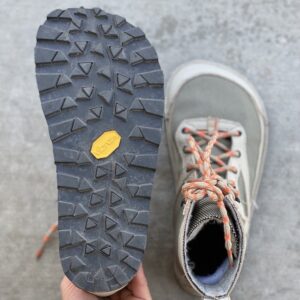
Looking for walking shoes with a wide toe box? Check out these top options for men and women that offer comfort, support, and a roomy
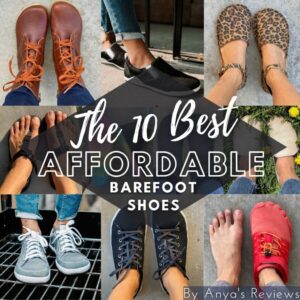
Looking for cheap barefoot shoes? Check out WHITIN Men’s Ultra-ventilated Barefoot Shoes for $19.99 on Amazon.com or Men’s Quick-dry Barefoot Shoes for $8.47 on Temu.
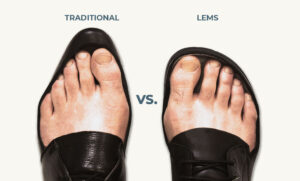
Foot-shaped shoes are available in various brands such as Lems Shoes, Padgene, Barekick, WHITIN, relxfeet, Xero Shoes, New Balance, Earthing Harmony, Atoms, BRONAX, Hike Footwear,
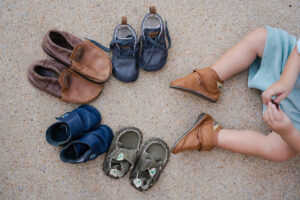
Toddler Barefoot Shoes provide a minimalist and lightweight option for kids to splay their feet naturally while walking, running, or playing sports. These shoes have
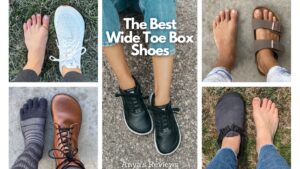
Discover a variety of wide toe box shoes for women in Austin, Texas, including options from Orthofeet, WHITIN, Temu, and more. These shoes offer comfort
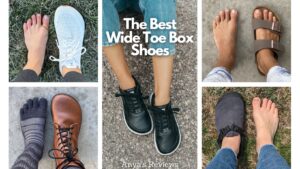
Toe box shoes provide ample space for the toes, allowing them to move freely and comfortably. They are available in various styles and sizes, with
